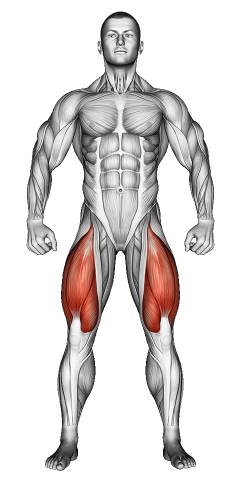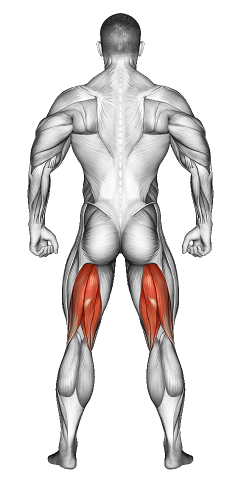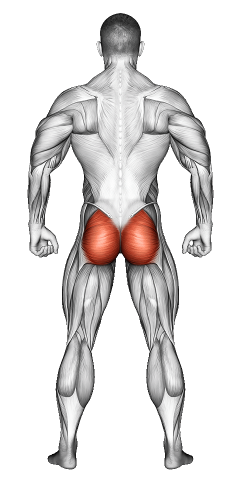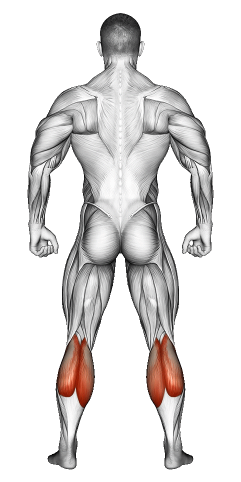Alternating Bodyweight Lunges: Video Tutorial & Exercise Guide

Written By: Claude Michael
Updated: Oct 13, 2024
| Workout | Alternating Bodyweight Lunges |
| Primary Muscle Group | Quads |
| Secondary Muscle Group | Hamstrings, Glutes Calves |
| Equipment Required | Bodyweight |
| Force Type | Push |
| Mechanics | Compound |
| Exercise Type | Strength |
| Difficulty | Beginner |
Alternating Bodyweight Lunges: Video Tutorial & Exercise Guide
- 1.Alternating Bodyweight Lunges: Muscle Groups
- -1.1Primary Muscle Group
- -1.2Secondary Muscle Group
- 2.Alternating Bodyweight Lunges: Step-by-Step Guide
- 3.Alternating Bodyweight Lunges: Overview
- 4.Alternating Bodyweight Lunges: Benefits
- 5.Alternating Bodyweight Lunges: Pro Tips & Advanced Techniques
- 6.Alternating Bodyweight Lunges: Progression Plan
- 7.Alternating Bodyweight Lunges: Frequently Asked Questions (FAQs)
Secondary Muscles Group
Alternating Bodyweight Lunges: Step-by-Step Guide
- Step 1: Stand tall with your feet hip-width apart and your hands on your hips or by your sides for balance. Engage your core and keep your chest lifted.
- Step 2: Step forward with your right leg into a lunge position. Lower your body by bending both knees until your right thigh is parallel to the floor and your left knee is hovering just above the ground.
- Step 3: Push through your right heel to return to the starting position, keeping your torso upright throughout the movement.
- Step 4: Immediately step forward with your left leg and repeat the lunge on the opposite side.
- Step 5: Continue alternating legs with each lunge, maintaining control and balance throughout the movement.
Alternating Bodyweight Lunges: Overview
Alternating Bodyweight Lunges are a dynamic lower-body exercise that targets the quads, hamstrings, glutes, and calves. This movement is great for improving balance, coordination, and leg strength while also engaging your core to maintain stability.
Lunges are a functional exercise that mimics real-life movements like walking, running, and climbing stairs. By performing lunges without weights, you can focus on mastering the technique and improving your range of motion, making them suitable for all fitness levels.
Alternating Bodyweight Lunges: Benefits
Alternating Bodyweight Lunges primarily target the quadriceps, hamstrings, and glutes, helping to build strength and endurance in the lower body. The lunging motion also improves hip flexibility and mobility, which is essential for maintaining a full range of motion in everyday activities.
This exercise engages the core muscles as well, promoting better balance and stability. It also enhances coordination and helps correct muscle imbalances between the left and right legs, making it a great unilateral exercise for overall lower-body development.
Additionally, lunges are a calorie-burning movement that can be used in high-repetition circuits or bodyweight workouts for conditioning and toning.
Alternating Bodyweight Lunges: Pro Tips & Advanced Techniques
Keep your torso upright throughout the movement and avoid leaning forward or arching your back. Focus on pushing through the heel of your front foot as you return to the starting position to maximize glute activation. For an added challenge, try performing walking lunges or adding a pause at the bottom of each lunge to increase time under tension. Ready to strengthen and tone your legs? Let’s lunge!
Alternating Bodyweight Lunges: Progression Plan
Beginner
Intermediate
Advanced
Alternating Bodyweight Lunges: Frequently Asked Questions (FAQs)
What muscles do Alternating Bodyweight Lunges target?
+This exercise primarily targets the quadriceps, hamstrings, and glutes, while also engaging the calves and core muscles for stability.
Are Alternating Bodyweight Lunges suitable for beginners?
+Yes, this exercise is great for beginners. It allows you to focus on proper form and balance without the need for weights. Start with fewer reps and build up as your strength and coordination improve.
How can I make Alternating Bodyweight Lunges more challenging?
+To increase the difficulty, try adding dumbbells for resistance or performing walking lunges. You can also slow down the movement or add a pause at the bottom of the lunge to increase muscle engagement and time under tension.
How often should I include Alternating Bodyweight Lunges in my routine?
+Include this exercise 2-3 times per week as part of your lower body or full-body workout. It pairs well with other leg exercises like squats and step-ups for a complete leg workout.
What common mistakes should I avoid?
+Avoid letting your front knee track over your toes, as this can place unnecessary strain on your knee joint. Focus on keeping your knee directly above your ankle, and keep your torso upright throughout the movement.
Share
Don’t Wish for It, Work for It – Join the FlexXP Newsletter Today!
Thank you for signing up for the FlexXP Newsletter!
This site is protected and the Google Privacy Policy and Terms of Service apply.



